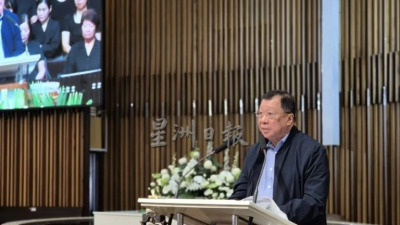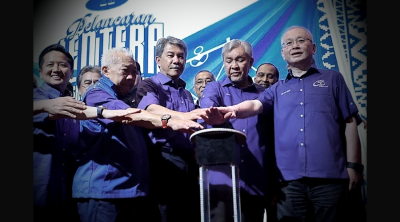
Like many who believe that what happens in American politics today is bound to have a great impact not just on America but on the rest of the world, I listened intently to the presidential debate between Kamala Harris and Donald Trump last Sept. 10.
What I found remarkable was not the debate itself but the wide variance between the commentaries on mainstream media that followed and the political memes that flooded social media platforms like TikTok soon after the debate.
To me, it is the most graphic indication of how social media is shaping political culture in ways we have not known before.
As expected, mainstream media’s analysts sought to parse the entire event by focusing on the substance of the statements made by the two candidates and the demeanour they projected on the stage.
They pointed out the instances where Harris and Trump faltered and where they scored points.
They compared their debating styles and strategies and decided who was the clear winner.
Between the two, it was Harris, in their view, who was able to project self-confidence, equanimity, and mastery of the issues.
But, best of all, mainstream media’s talking heads fact-checked and weighed the validity of the assertions the candidates made.
In general, I believe that is how a reasonably well-informed political observer might approach an event like this.
The interest would be on the substantive answers, rather than on the demeanour; more on the utterances made than on the stage performance.
I now think that this way of experiencing a debate has changed tremendously.
Audiences have become less cerebral and more visual; more responsive to the debaters’ deportment or bearing than to the intellectual adequacy of their arguments.
The new media lend themselves more easily to sarcasm and ridicule than to deconstructive analysis, to wordless depictions of the absurd than to fact-checking and logical argumentation.
I thought that the hilarious memes of pet dogs and cats scampering away after hearing Trump’s racist rant about migrants eating their neighbours’ pets in Springfield, Ohio, conveyed the absurdity of his anti-immigrant paranoia far more sharply than any commentary I have heard or read.
To begin to understand the implications and consequences of this mind-boggling change, we need to go back to Niklas Luhmann’s discussion of the societal function of the mass media.
“Whatever we know about our society, or indeed about the world in which we live, we know through the mass media,” wrote Luhmann in his pathbreaking book “The Reality of the Mass Media”.
Written in 1994, this slim volume, however, did not anticipate the rise of the new social media—the interactive digital platforms that allow mass media audiences to use the same tools of mass copying and dissemination that, for a long time, have been the monopoly of mainstream media and the source of their outsize power in modern society.
From mere passive consumers, today’s audiences have become active producers of mass communications—a dramatic role transformation that is not adequately captured by the term “user”—as in TikTok or Facebook user.
This development has been described as a form of democratisation that can potentially unleash human creativity and offer fresh ways of seeing the world.
In many ways, however, it is also akin to giving a powerful weapon to people without holding them accountable for its misuse.
The mass media construct reality. That is their function. The authoritative depictions of reality they provide become the foundation or starting point of much of what we do in our everyday lives.
Since none of us ever directly experiences the world of everyday life in its entirety, we are left to rely on the mass media for knowledge of what is happening beyond the sphere of our direct personal experience.
The funny thing is that sometimes we may even find ourselves disbelieving what we have actually seen or heard until it is confirmed by the news.
This trust remains even when we suspect the media of being selective in what they report or unduly protective of certain “sacred cows.”
Such reservations seldom ripen into a full-blown skepticism because, as Luhmann puts it, “knowledge acquired from the mass media merges together as if of its own accord into a self-reinforcing structure.”
Behind this standardisation of the news is the fact that traditional mass media organisations “are dependent upon assumptions concerning acceptability.”
To ensure the continuous patronage and interest of their readers and viewers, they adhere to common standards of what is appropriate or expected.
It is a system that has worked without central coordination.
In addition to this systemic guardrail, news organisations that jealously guard their credibility adopt internal procedures for fact-checking and repeated verification.
In contrast, information and images posted on today’s social media platforms thrive on sheer virality.
Their mere proliferation confirms their value, often reinforcing unexamined beliefs and latent emotional dispositions, regardless of their truth or falsity.
ADVERTISEMENT
ADVERTISEMENT








































